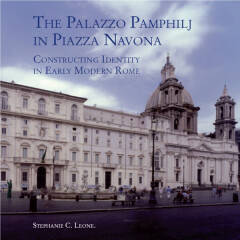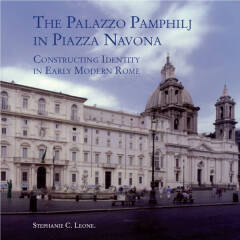
- Retrait gratuit dans votre magasin Club
- 7.000.000 titres dans notre catalogue
- Payer en toute sécurité
- Toujours un magasin près de chez vous
- Retrait gratuit dans votre magasin Club
- 7.000.0000 titres dans notre catalogue
- Payer en toute sécurité
- Toujours un magasin près de chez vous
The Palazzo Pamphilj in Piazza Navona
Constructing Identity in Early Modern Rome
Stephanie C Leone
Livre relié | Anglais
267,95 €
+ 535 points
Description
The piazza Navona is one of the most celebrated urban spaces in Rome and perhaps Europe. Despite its lasting fame, neither the uninitiated nor the specialist has been fully privy to the history of its remarkable transformation from a medieval field to a magnificent Baroque piazza. The ambititions of a single family, The Pamphilj, engendered this remarkable change. Pope Innocent X (1644-55) sought to proclaim his family's identity through a building program, including the monumental palace, church of S. Agnese in Agone, Collegio Innocenziano, and Gianlorenzo Bernini's Fountain of the Four Rivers and Fountain of the Moor. The Pamphilj endowed the entire urban space with its indelible presence. Although the Palazzo Pamphilj was the catalyst for the single most important building program in mid-seventeenth-century Rome, its history has been largely neglected, and misconceptions have hindered an accurate understanding of the monument and its place in early modern architecture. Presenting a fundamentally revised history, this book argues in favor of a collaborative process of execution, in two distinct phases (1634-38, 1645-50), involving three architects (Francesco Peperelli, Girolamo Rainaldi, Francesco Borromini), two patrons (Innocent X and his sister-in-law Olimpia Maidalchini), and an architectural revisor (Virgilio Spada). The history of the palace is presented as inextricably linked to the social milieu of the early modern papal court and the development of piazza Navona and the city. From the vicissitudes of this story arise broader issues: building as identity, architecture and social ritual, artistic collaboration, women patrons, and collective memories of sites. Stephanie Leone teaches Art History at Boston College. Her primary field of research concerns seventeenth-century domestic architecture in Rome.
Spécifications
Parties prenantes
- Auteur(s) :
- Editeur:
Contenu
- Nombre de pages :
- 376
- Langue:
- Anglais
Caractéristiques
- EAN:
- 9781905375073
- Date de parution :
- 18-06-08
- Format:
- Livre relié
- Format numérique:
- Genaaid
- Dimensions :
- 244 mm x 244 mm
- Poids :
- 1746 g

Les avis
Nous publions uniquement les avis qui respectent les conditions requises. Consultez nos conditions pour les avis.






